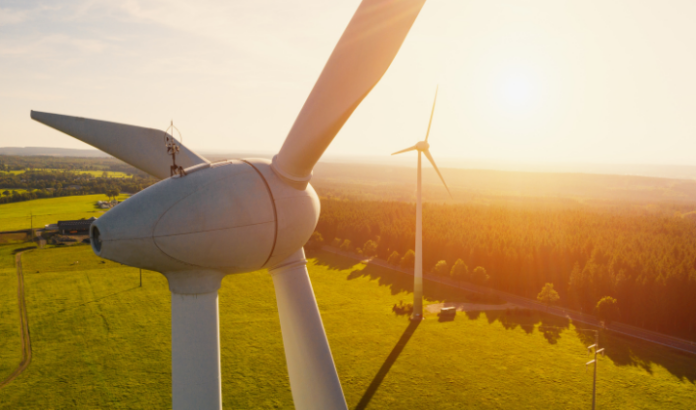21 Aug 2023
The wind energy industry is on the rise, along with the global focus on renewable technology. Patent filings for wind technology, specifically, have grown exponentially over the past few decades, drawing attention from investors, researchers, and innovators across the globe.
As the sector continues to accelerate, questions arise about patent considerations and the strategic partnerships needed to fuel innovation. It’s important to explore not only the trends shaping the industry, but also the advantages and disadvantages of various patent filing methods, unique challenges faced by wind energy innovators, and the crucial aspects to consider when collaborating with research and development (R&D) entities.
Wind Energy Industry Trends: An Organic Growth Spurt
Over the past two decades, the wind energy industry has experienced an impressive upswing in patent filings. This growth is driven not only by the increasing focus on renewable energy sources, but also by the incentives offered by the U.S. Patent and Trademark Office (USPTO).
The USPTO’s Climate Change Mitigation Pilot Program, which launched in June 2023, prioritizes green tech patent examinations, significantly shortening the usually lengthy process. Before the launch, the USPTO announced an expansion of the program eligibility requirements in May 2023, with the extended and expanded program running through June 2027. Innovations eligible for the program in any economic sector that move toward achieving net-zero greenhouse gas emissions include those designed to:
- Remove greenhouse gases already present in the atmosphere;
- Reduce and/or prevent additional greenhouse gas emissions; and/or
- Monitor, track, and/or verify greenhouse gas emission reductions.
The recent launch of the “Patents for Humanity” program has provided further incentives for inventors in the green energy space. Startups, in particular, benefit from these incentives, enabling them to enter the market swiftly.
Inflation Reduction Act credits have also helped drive development and innovation in the wind space, along with bolstering U.S. manufacturing ventures and new technology. The credit is boosting U.S. wind energy projects — including project staffing, transmission connectivity, and the development of new technologies. Additionally, talent and technology crossovers from the U.S. oil and gas industry, and states vying for wind energy investments, have created an uptick in sector patent activity.
The Pros and Cons of National, Regional, and PCT Patent Filings
Wind energy innovators face a crucial decision when it comes to patent filings: whether to file applications nationally, regionally, or via the Patent Cooperation Treaty (PCT) system. The choice depends on factors such as the product’s geographical reach, foreign competitors, and potential licensing agreements.
While often eager to file globally, startups can face challenges in financing patents outside the U.S., but there are ways to narrow down whether filing in other countries is right for your invention.
A PCT patent filing may be the right choice if you answer yes to any of these questions:
- Is the product going to be sold in a foreign country?
- Are you looking to restrict a foreign competitor?
- Do you now or might you in the future have a licensee in a foreign country?
While national filings are suitable for specific markets, the PCT system offers a cost-effective solution when seeking protection in multiple countries. It’s essential for startups to carefully consider long-term goals and budget constraints when making this critical decision.
Patenting Focus and Technology Challenges in Wind Energy
One of the unique challenges faced by the wind energy industry is the design and construction of wind farms. Engineers recently have turned a focus toward addressing issues related to vibration, weather, and load conditions to ensure the durability and efficiency of wind turbines.
Since many wind farms are constructed in remote areas, they require careful planning and innovative solutions. Patent applications in this sector typically focus on engineering solutions to improve construction methods and optimize wind turbine performance, while visual and noise aspects have received relatively fewer patent filings.
Partnering with R&D Entities: Ensuring a Smooth Ownership Transition
Collaborations between corporations and research institutions, such as universities, are common in the wind energy sector. However, companies must prioritize intellectual property (IP) ownership to avoid future conflicts. In the U.S., absent an inventor assignment, inventors own patent applications, which can lead to complications when partnering with R&D entities. For example, many business partners are attracted to the simple solution of co-ownership of intellectual property rights. However, co-ownership can create a messy situation where both parties have the ability to license the patent (or patent application) without the consent of the other party. IP co-ownership also creates a scenario where neither joint owner can enforce the patent without joining the other joint owners. This can diminish the value of a patent. In this sense, corporations and their R&D partners can benefit from conducting thorough due diligence and establishing clear ownership agreements with inventors or researchers to prevent disputes over patent rights — regardless of whether it’s a new invention or an existing invention that’s being expanded.
The wind energy industry is exciting and constantly evolving, and inventors — and investors — are riding a wave of organic growth, driven by the global focus on renewable energy and the USPTO’s incentives for green tech patent filings. Startups, in particular, benefit from these programs, accelerating their entry into the market. Industry innovators face strategic decisions regarding patent filings and partnerships, making it essential to balance cost considerations, market reach, and foreign competition when determining the appropriate filing method. Collaborations with R&D entities demand careful attention to IP ownership to ensure a smooth transition from invention to patent.
As the industry continues to evolve, the key to success lies in a well-executed patent strategy and fostering strong partnerships with research institutions. The team at Henry Patent Law Firm, with its deep bench of attorneys with real energy and tech industry experience, understands how to navigate the USPTO’s patent approval process, and we have significant experience obtaining accelerated examination status for U.S. patent applications. Contact us today to find out how we can help you protect your innovations.

Samuel Udovich
Sam Udovich is a patent attorney who helps tech companies develop patent portfolios, focusing on electrical and mechanical technologies.

